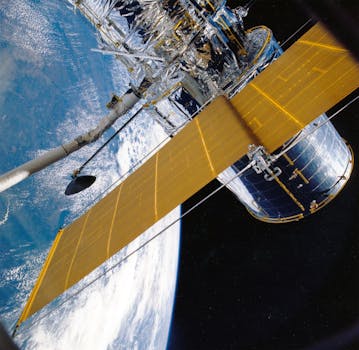
Orbiting Innovations: Key Updates in Satellite Telecommunications Technology
Satellite Telecommunications Technology has undergone significant transformations in recent years, revolutionizing the way we communicate and access information. With the increasing demand for global connectivity, satellite telecommunications have become a vital component of modern communication systems. In this article, we will explore the key updates in satellite telecommunications technology and their impact on the industry.
Introduction to Satellite Telecommunications
Satellite telecommunications involve the use of satellites orbiting the Earth to transmit and receive signals, enabling communication between different locations. This technology has been around for several decades, but recent advancements have made it more efficient, reliable, and accessible. Satellite telecommunications offer a wide range of applications, including television broadcasting, internet connectivity, navigation, and mobile communication.
Advances in Satellite Technology
Several advancements have contributed to the growth and development of satellite telecommunications. Some of the key updates include the launch of new satellite constellations, such as OneWeb and Starlink, which provide high-speed internet connectivity to remote and underserved areas. The development of advanced satellite antennas, such as phased arrays and flat panel antennas, has also improved the efficiency and capacity of satellite communications. Furthermore, the use of artificial intelligence and machine learning algorithms has enhanced the performance and reliability of satellite systems.
Applications of Satellite Telecommunications
Satellite telecommunications have a wide range of applications, including television broadcasting, internet connectivity, navigation, and mobile communication. Satellite television broadcasting allows for global coverage, enabling users to access a wide range of channels and programs. Satellite internet connectivity provides access to remote and underserved areas, bridging the digital divide and enabling communities to access vital information and services. Navigation systems, such as GPS, rely on satellite telecommunications to provide location information and timing signals. Mobile communication systems, such as satellite phones and messaging services, enable users to stay connected in areas with limited or no terrestrial coverage.
Challenges and Future Directions
Despite the advancements in satellite telecommunications, there are still several challenges that need to be addressed. One of the major challenges is the issue of space debris, which poses a significant risk to the sustainability of satellite systems. The development of sustainable and environmentally friendly satellite technologies is essential to mitigate this risk. Another challenge is the need for interoperability between different satellite systems, enabling seamless communication and coordination between different operators and users. The future of satellite telecommunications holds much promise, with the development of new technologies, such as quantum communication and optical communication, which will further enhance the performance and security of satellite systems.

